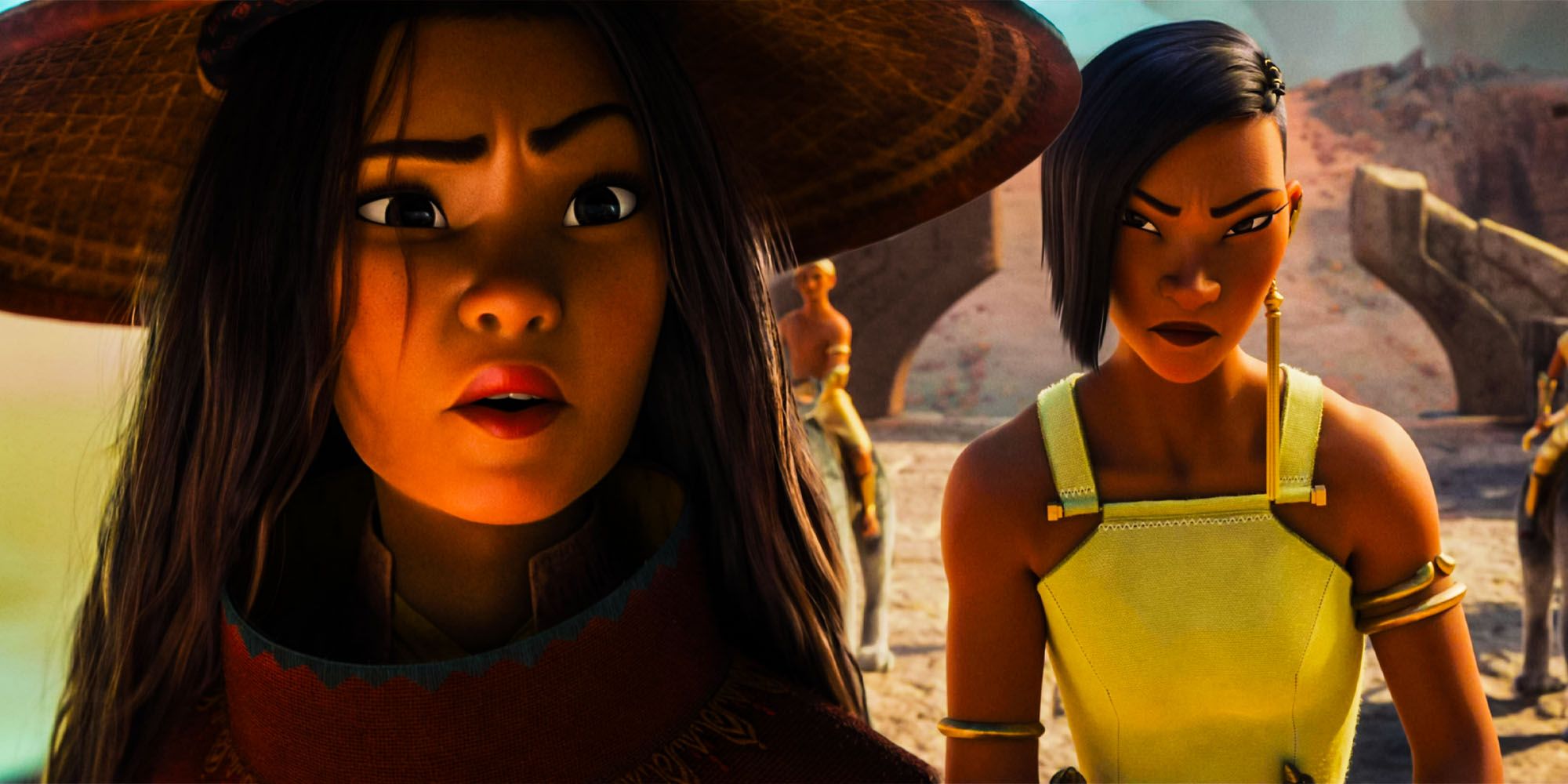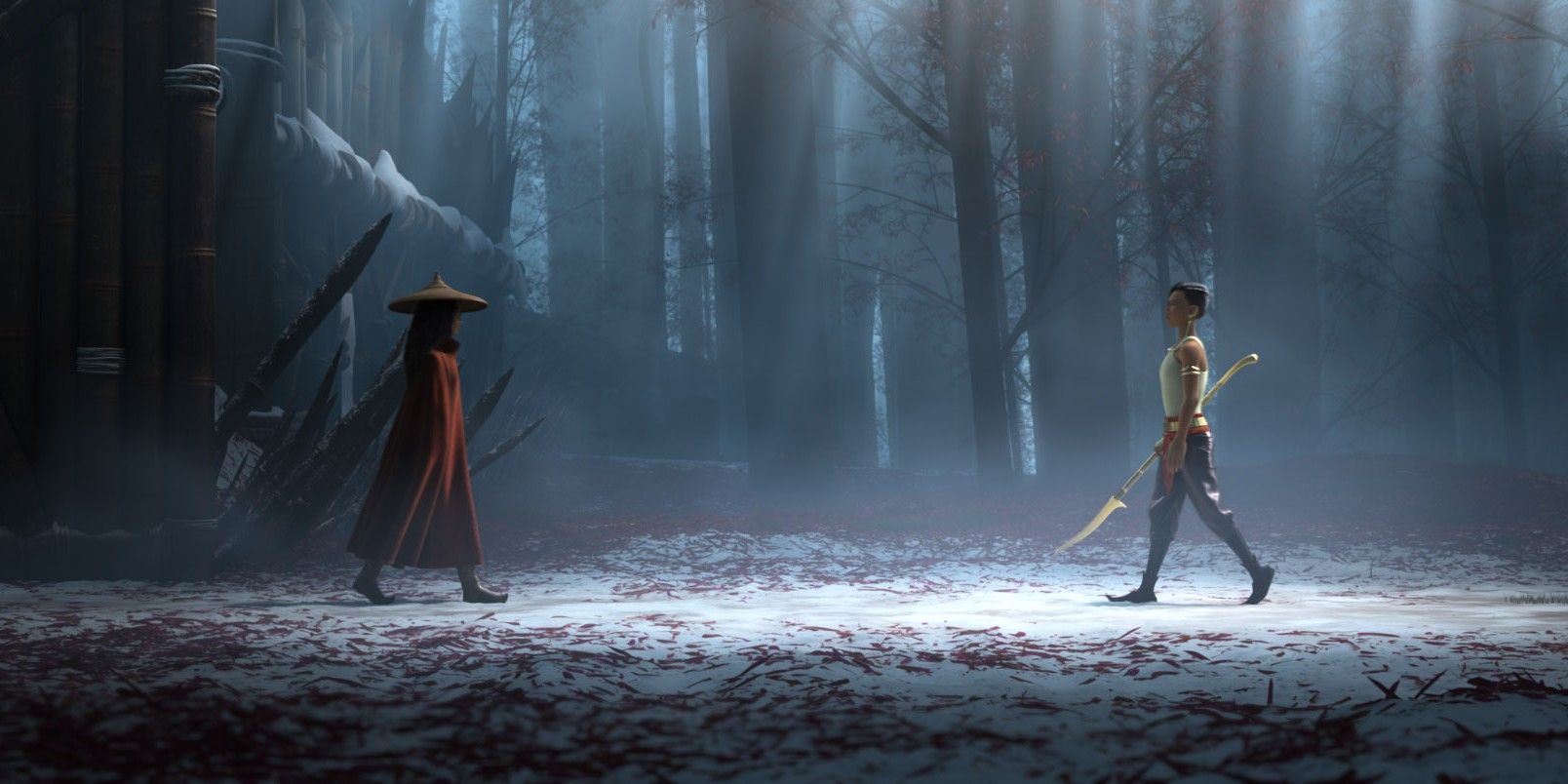Raya and The Last Dragon pushed a superficial message about trusting others that directly contradicted the messages about trust presented in classic Disney movies. Since its inception, Walt Disney Animation Studios had consistently embraced similar perspectives pertaining to themes of trust throughout its vast catalog. Raya and The Last Dragon was the first Disney feature film to directly oppose such themes, harming their pragmatic impact in the process.
Raya and The Last Dragon followed the adventures of a strong-willed princess who embarked on a mission to rescue her father from an eternity of remaining as a stone statue. In order save her father, Raya (voiced by Kelly Marie Tran) enlisted the help of a dragon named Sisu (Awkwafina) to collect pieces of a magical gemstone capable of banishing the evil spirits that turned her father into stone once and for all. As Raya and Sisu commenced their journey, they were pursued by Raya's rival Namaari (Gemma Chan) who unintentionally released said evil spirits by taking advantage of Raya's trust in their younger years. At the end of the film, Sisu encouraged Raya to trust Namaari once again in order to stop the evil spirits and save the world. Raya reluctantly did so, despite Namaari taking no action to earn back Raya's trust.
Past Disney films had repeatedly emphasized the strength of bonds that are formed by earning trust. In Beauty and the Beast, Belle and the Beast had shown how two individuals could go from being unable to stand one another to willing to sacrifice themselves for each other simply by spending time together. This development wasn't solely limited to romantic relationships, as Mulan gained lifelong comrades who were willing to defy their captain in order to support her after roughing it together during training camp. Found family stories also showed the impact of growing bonds, as depicted in the father-son relationship that flourished between Jim Hawkins and John Silver in Treasure Planet. While Raya did form unbreakable bonds with her traveling companions, the movie chose to have Raya learning to trust Namaari be the catalyst to saving the world. However, Namaari had done nothing to earn Raya's trust, making their bond with each other the weakest in comparison. By having this frail bond save the world, Raya and the Last Dragon undermined the importance of building trust that was displayed in the Disney movies that came before it.
Classic Disney motion pictures had showcased the strength of bonds formed by earning trust in order to starkly contrast them with the consequences of unwarranted trust. For example, Snow White was poisoned by accepting an apple from her stepmother in disguise as a seemingly harmless old lady in Snow White and the Seven Dwarfs. Similarly, Aladdin nearly became trapped in the Cave of Wonders as a result of trusting Jafar in disguise as a decrepit old man. Even Ariel nearly lost her both her voice and life by putting her faith in Ursula's magic in The Little Mermaid. These "strangers" took advantage of the protagonists' trust, warning the viewers of the dangers of blind trust. Raya and the Last Dragon overlooked these dangers by approving of Sisu's trusting nature under every circumstance, even when such blind trust caused the film's inciting incident in the first place.
Though the themes presented in classic Disney movies weren't complicated, they delivered positive messages. To list a few, Mulan taught children the power of believing in oneself, Treasure Planet redefined the meaning of family, and Aladdin highlighted the importance of telling the truth. Raya and the Last Dragon's message about trusting others was positive on the surface, but could leave behind negative side effects due to its poor execution.


